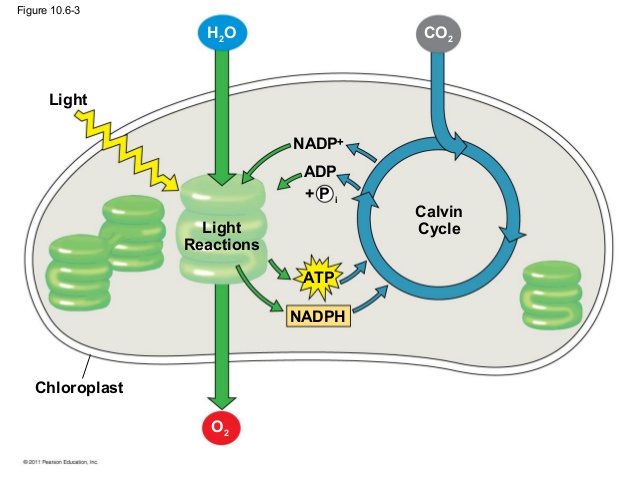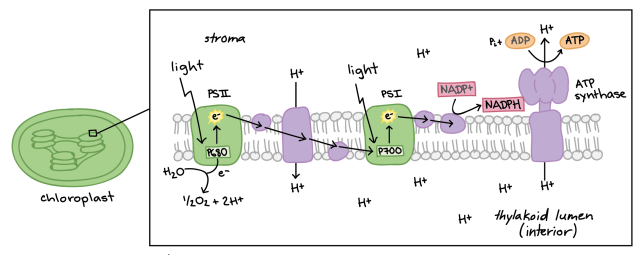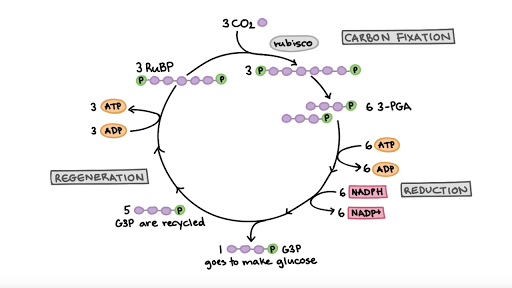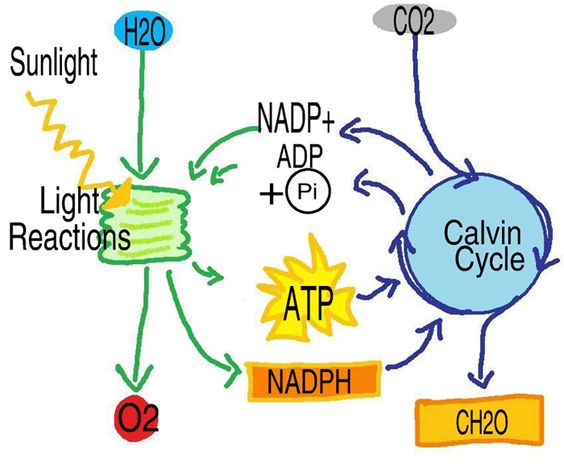Describe the overall structure of a chloroplast and where the two major steps of photosynthesis take places. Talk about the thylakoid and the stroma. Discuss the light reactions (Photosystems I and II, ATP synthase, the electron transport chain) and the Calvin Cycle.
The chloroplasts are the specific sites of photosynthesis in PLANT cells (animal calls do not have chloroplasts). The chloroplast has an inner and outer membrane, the stroma (site of calvin cycle / light independent reactions – a fluid filled area) and the thylakoids. The thylakoids are the sites of the light dependent reactions. They contain chlorophyll which is a colored compound that absorbs light. Chlorophyll is what makes plants green.

The photosynthesis process begins with the light dependent reactions, in the thylakoid. So it all starts with Photosystem II (not I). 2H2O and light come in and water is split up into O2 and 4 H+. The water provides the high potential energy electron for the electron transport chain. The electrons move down the chain to Photosystem I. More light is introduced as well as 2 NADP+ and 2H+, 2NADPH are produced at this step to be used later in the Calvin Cycle. The last step is ATP synthase which utilizes the H+ gradient and stamps 3Pi onto 3ADP to produce 3ATP which are sent to the Calvin Cycle (outside of the thylakoid) for the last steps.

The Calvin Cycle (light independent reactions or dark reactions) has three phases: Carbon fixation, Reduction, and Regeneration. The Calvin Cycle starts with 3CO2 coming in. Carbon fixation occurs which means that the carbons are bonded to something to make them usable. 3CO2 is combined with a P from the 6ATP (6ADP are left) to make 6PGA. Then during reduction, the 6 NADPH from before are broken into 6NADP+, 6H2O, and 6Pi and 6PGAL are produced but one goes off and you are left with 5. Then 3ATP come in and regenerate to 3ADP and 3Pi and 3RuBP are produced. Then the it bonds with 3CO2 and the cycle is started over again. 

